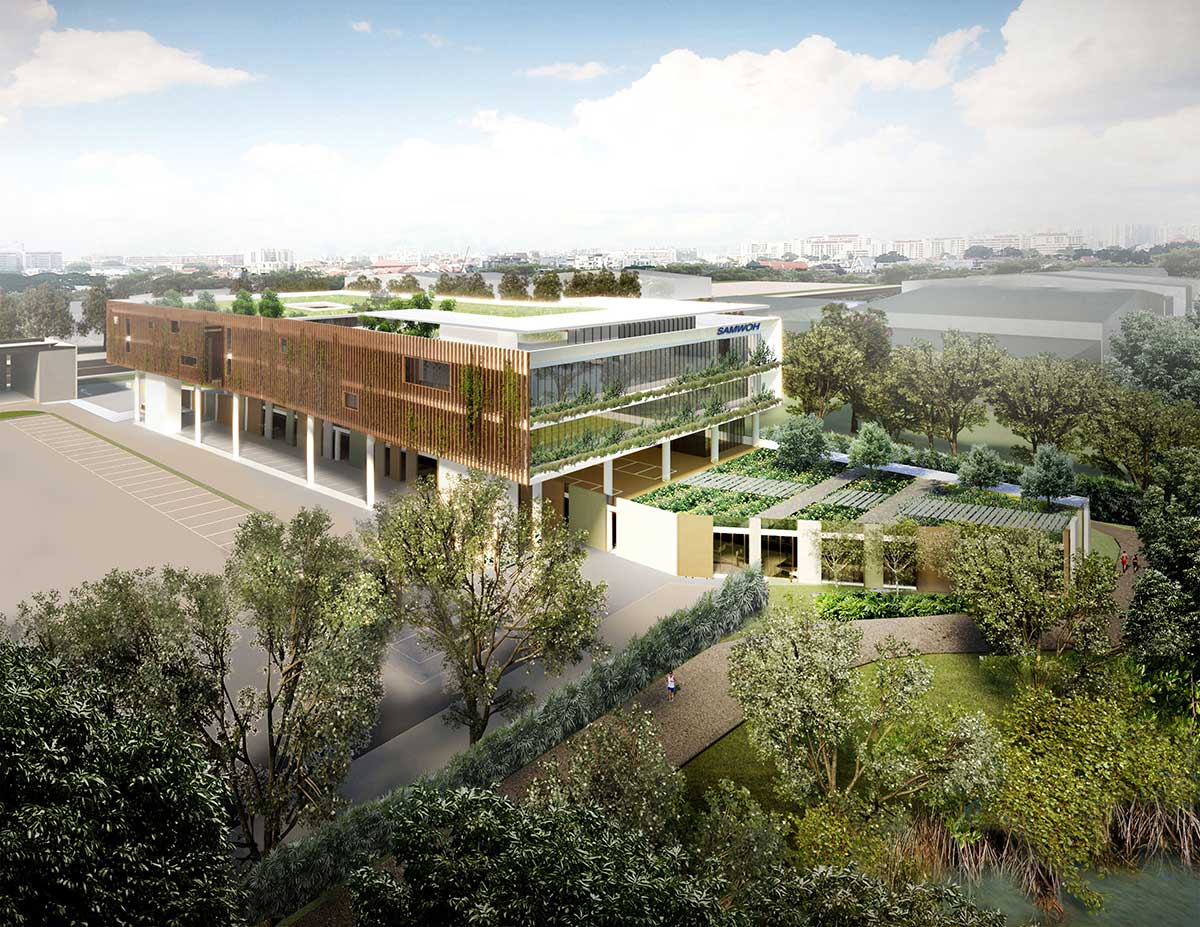This article is part of a series featuring the winners of the inaugural iBuildSG Distinguished Fellow award.
Six Built Environment sector leaders, whose professions straddle across academia, architects, builders, engineers and developers, have been conferred the title of iBuildSG Distinguished Fellow. Appointment as a Distinguished Fellow is the highest level of recognition given to senior Built Environment (BE) leaders under the iBuildSG Leadership Engagement and Development (LEAD) Framework for their leadership and immense contributions to the BE sector.
For Dr Ho Nyok Yong, to dare is to dream. The civil engineer always dreams of finding ways to design and construct projects in a more innovative, productive and sustainable manner.
For years, the well-respected leader in the built environment sector had observed the surge in construction and demolition waste (CDW) brought about by the tearing down of buildings and structures.
Apart from the environmental degradation caused by poor disposal techniques, the inability to repurpose the CDW was placing a huge demand on the extraction and processing of raw materials.
If Singapore’s built environment sector was going to be truly sustainable, he knew he had to turn things around.
In 2008, the Executive Director and Chief Operating Officer of construction company Samwoh Corporation decided to put together a research team to bring to life a revolutionary idea – building a structure entirely out of recycled concrete aggregate (RCA).
Recycled from concrete scrap, RCA is just as durable and structurally reliable as natural aggregate materials if designed properly. It worked.
Dr Ho collaborated with the Building and Construction Authority (BCA) and Nanyang Technological University to build the Samwoh Eco-Green Building. It is one of the first buildings in the world to use concrete made with up to 100 per cent RCA.
Fibre optic sensors were also embedded in the columns to monitor the structural performance of the concrete. The results proved that the RCA was as good as existing industry alternatives.
This ground-breaking innovation won him the BCA-SGBC (Singapore Green Building Council) Green Innovator Individual Award in 2011. It is also partially responsible for the higher rate of recycled CDW in 2019 – at 99 per cent, almost nothing goes to waste.
“The idea is to create systems that will allow future generations to live in a sustainable and responsible manner,” said Dr Ho, who has won multiple awards for green innovation and engineering.
Solid contributions
A decade after the construction of the Samwoh Eco-Green building, Dr Ho is making waves yet again with the Samwoh Smart Hub.
|
|
 Artist impression of Samwoh Smart Hub, Credit: Samwoh Corporation Pte Ltd Artist impression of Samwoh Smart Hub, Credit: Samwoh Corporation Pte Ltd
|
|
The hub is the first in Singapore to utilise 7-dimensional Building Information Modelling (7D BIM). The software encompasses facility and operational management that tabulates digitally the operational costs of maintaining building elements during the early design stages.
In 2019, the project won the BCA Green Mark Platinum Award, a prestigious award for organisations which demonstrate commitment and significant achievements in environmental sustainability. When completed in early 2021, it will be the first positive-energy industrial building in Singapore, producing about 20 per cent more energy than it consumes.
Another project that has put the company in the global spotlight is the creep testing machine. Devised by Dr Ho and his research team in 2010, it automates pressure tests on concrete specimens, removing the need for researchers to manually adjust set-ups and take note of anomalies.
Ultimately, Dr Ho believes that innovation and research need to go hand in hand for the built environment sector to embrace higher standards.
Noting that very few construction companies have research innovation centres as they are costly, he believes it is a worthwhile investment.
Currently, his company’s innovation centre is working on at least 10 practical research projects, including creating durable, eco-friendly roads and infrastructures from plastic and other wastes; digitisation to improve work processes, and the development of various sustainable construction products.
The key building block: people
Far beyond the revenue gained from projects, Dr Ho finds fulfilment in seeing his contributions add value to the environment.
Yet, of all the components necessary in putting together any project, he believes cooperation between stakeholders is the most important. “I always emphasise on interpersonal skills,” he shared.
Even the most skilled employee needs to know how to work with people, or the entire team’s progress will be affected. “If you have the right people, the project would be halfway towards being a success,” he added.
For Dr Ho, creating a structure goes beyond just blueprints and concepts. It is about being bold enough to chase futuristic dreams and transform them into reality.